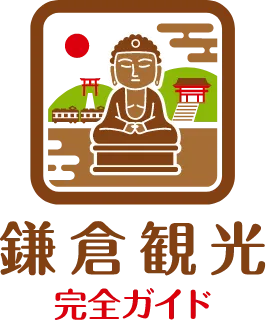Hokoku-ji Temple (報国寺)
Discover the Bamboo Forest of Hokoku-ji Temple
Hokoku-ji Temple is a Rinzai Zen temple of the Kencho-ji school located in the eastern part of Kamakura (鎌倉), Kanagawa Prefecture (神奈川県). It was founded in the early 14th century, just before the Muromachi shogunate began. The temple’s origins are closely tied to Takauji Ashikaga (足利尊氏)’s grandfather, Ietoki Ashikaga (足利家時), and his retainer, Shigekane Uesugi (上杉重兼), who is believed to have overseen its construction. Hokoku-ji Temple symbolizes the deep connection between the Ashikaga (足利氏) and Uesugi (上杉氏) clans, two of the most influential samurai families of medieval Japan.
Scenic Highlights: Architecture, Bamboo, and Nature
The temple is most famous for its bamboo grove, often called the “Bamboo Temple.” Around 2,000 Moso bamboo stalks rise in an orderly rhythm, creating a serene space filled with dancing light, soft shadows, and the gentle rustling of leaves. Moss-covered stones, small Jizo (地蔵) statues, and stone pagodas dot the forest, enhancing its mystical atmosphere. At the back, the teahouse Kyuko-an (休耕庵) offers matcha and traditional sweets with a view of the tranquil bamboo.
Cultural Significance and Historical Treasures
The first head priest of Hokoku-ji Temple was Tengan Eko (天岸慧広), a respected monk who had trained in China. His collection of poems, Toki-shu (東帰集), and the wooden seal used in his signature are designated Important Cultural Properties of Japan. These items are significant references for Gozan literature and Zen culture. Within the temple grounds, visitors can find yagura cave tombs where members of the Ashikaga family, including Yoshihisa Ashikaga (足利義久), who died during the Eikyo Rebellion (永享の乱), are enshrined.
Omikuji, Goshuin, and Zen Rituals
Visitors can receive a goshuin (御朱印) after their prayers, a subtle and elegant memento typical of Zen temples. Every Sunday morning, the temple hosts a zazen meditation session open to beginners, providing a rare chance to experience authentic Zen practice.
How to Get There from Tosh’s Place (トシズプレイス)
From Tosh’s Place (トシズプレイス), you can take a bus from Kamakura Station (鎌倉駅) and get off at the Jomyo-ji (浄明寺) stop, then walk for about 3 minutes to reach Hokoku-ji Temple . If you prefer to walk from the station, it takes over 30 minutes, so plan accordingly. A taxi takes around 7–10 minutes. While parking is available, spaces are limited—public transport is recommended. The temple is open from 9:00 AM to 4:00 PM.
Best Time to Visit
The bamboo grove is especially magical in the morning when sunlight filters through quietly. Each season offers a different charm: cherry blossoms in spring, hydrangeas in early summer, fiery foliage in late autumn, and camellias in winter. The peak autumn color period from late November to early December is particularly stunning.
Nearby Spots Worth Exploring
Just a short walk away is Jomyo-ji Temple (浄妙寺), one of the five great Zen temples of Kamakura (鎌倉), featuring the tea house Kisen-an (喜泉庵) and the Stone Oven Garden Terrace café. Also nearby are Sugimoto-dera Temple (杉本寺), Kamakura-gu Shrine (鎌倉宮), and Ichijo Ekan Sanso Villa (一条恵観山荘). For those who enjoy light hiking, Mt. Kinubariyama (衣張山) offers panoramic views of Kamakura (鎌倉) and Yuigahama Beach (由比ヶ浜) from the summit.
Who Will Enjoy This Spot Most?
- Those seeking quiet nature and historical depth
- Photography or sketching enthusiasts
- Early risers looking for a peaceful morning stroll
- Travelers seeking off-the-beaten-path calm
- Matcha and tea room lovers
Wrap-Up: The Bamboo Tranquility You Can Enjoy During Your Stay
Hokoku-ji Temple offers a deeply peaceful experience where Zen philosophy and natural beauty converge. It’s a place that inspires mindfulness and quiet reflection. By staying at Tosh’s Place (トシズプレイス), guests can easily visit in the early morning, enjoying the serene bamboo grove and matcha before the crowds arrive. Embrace a meditative walk and rediscover calm in this sacred Zen retreat.
